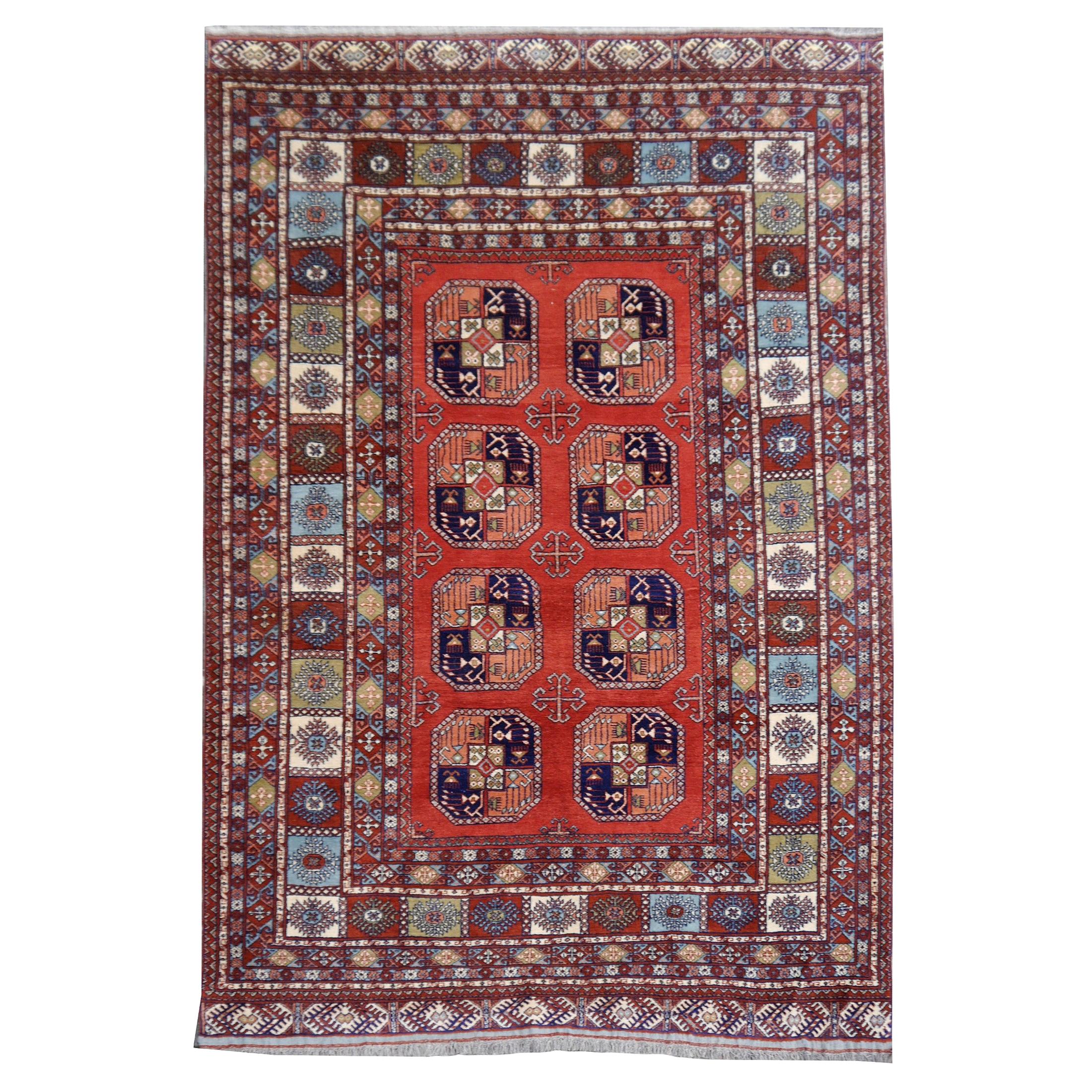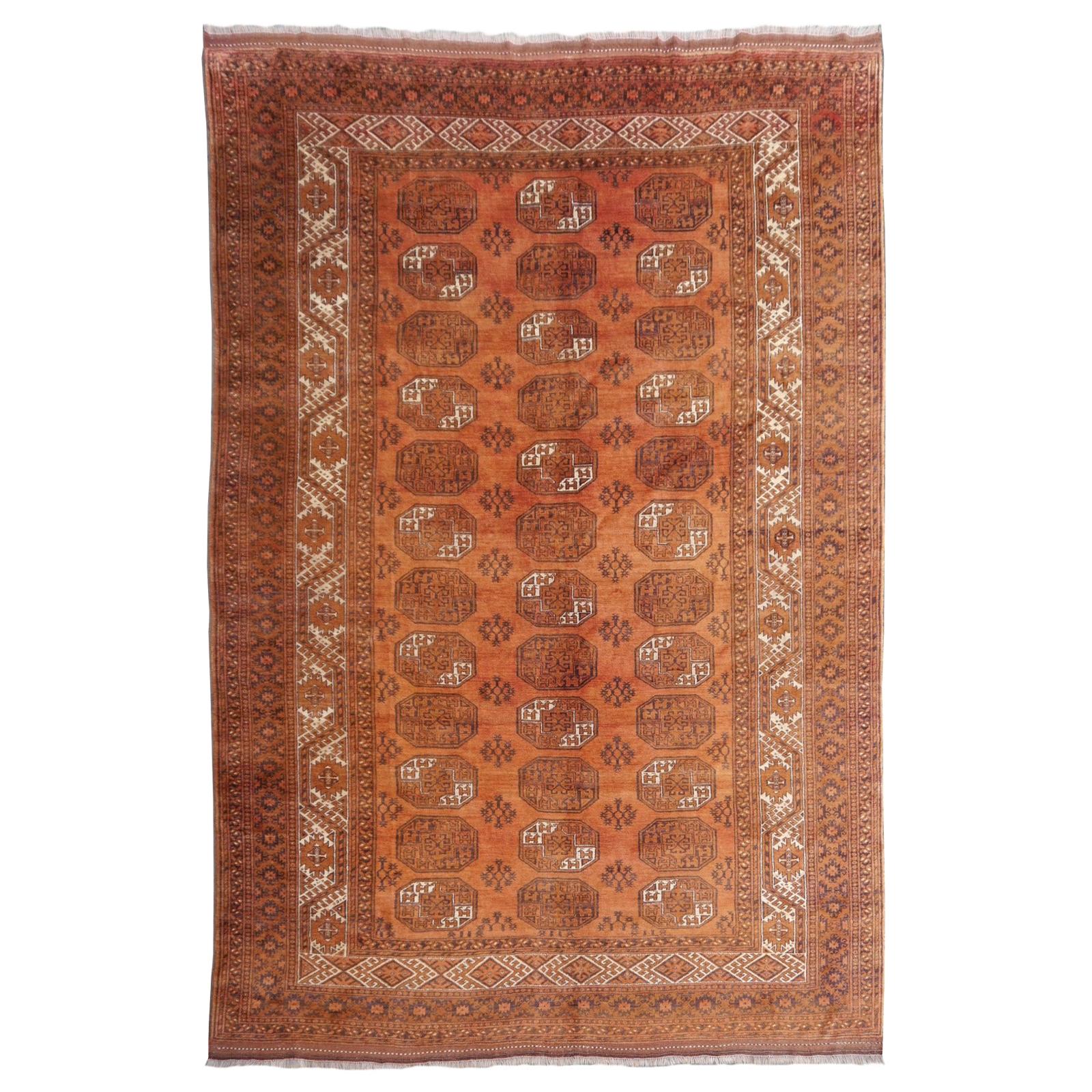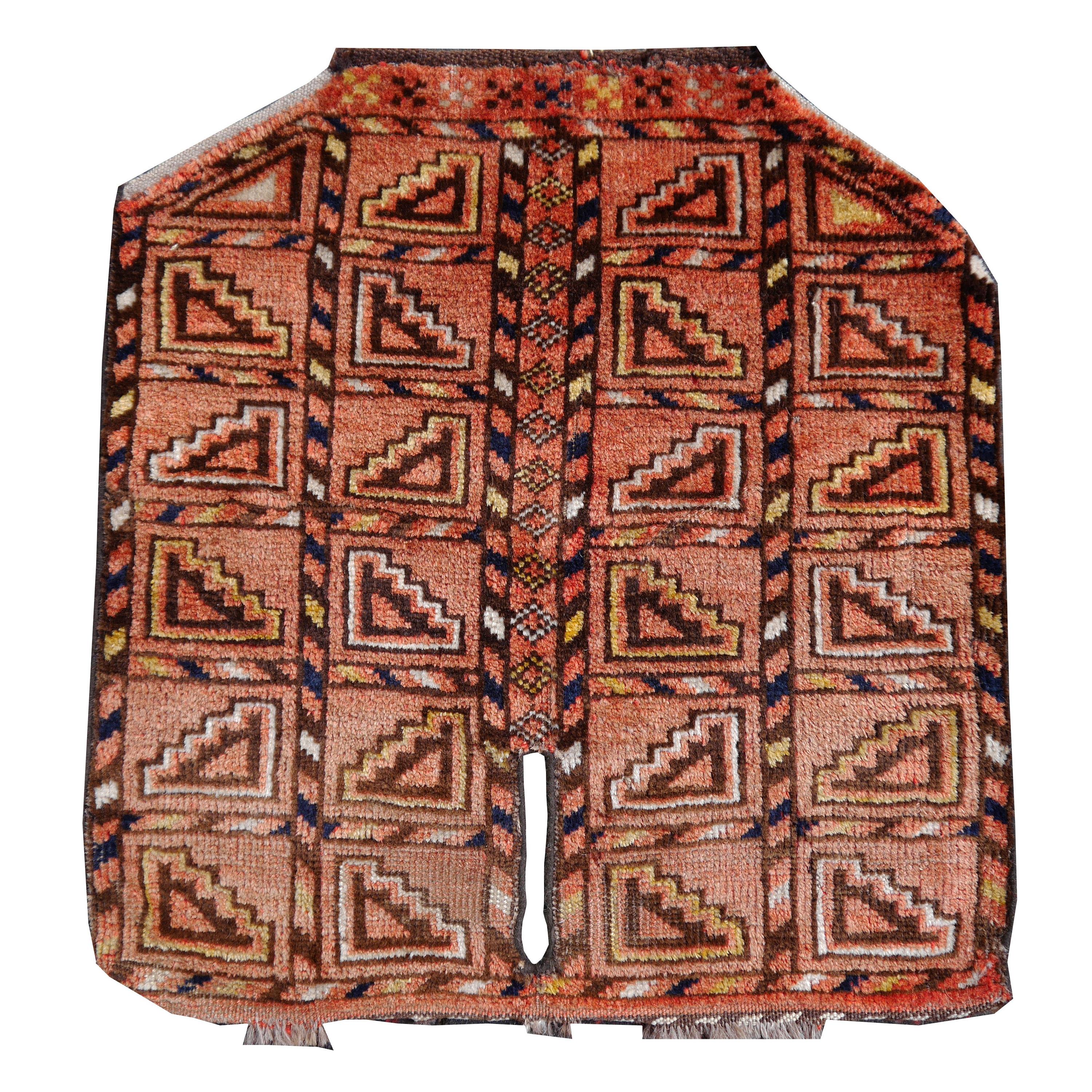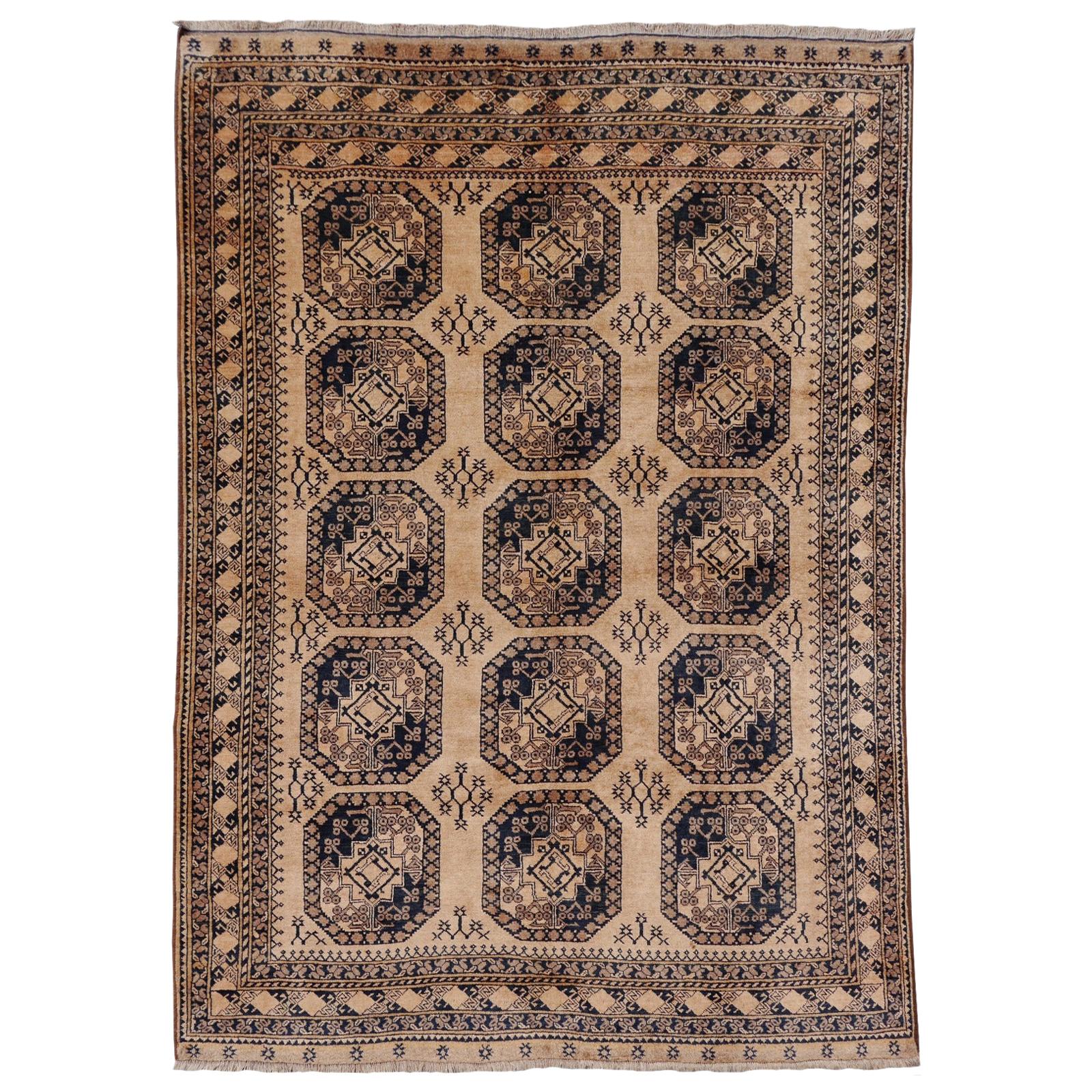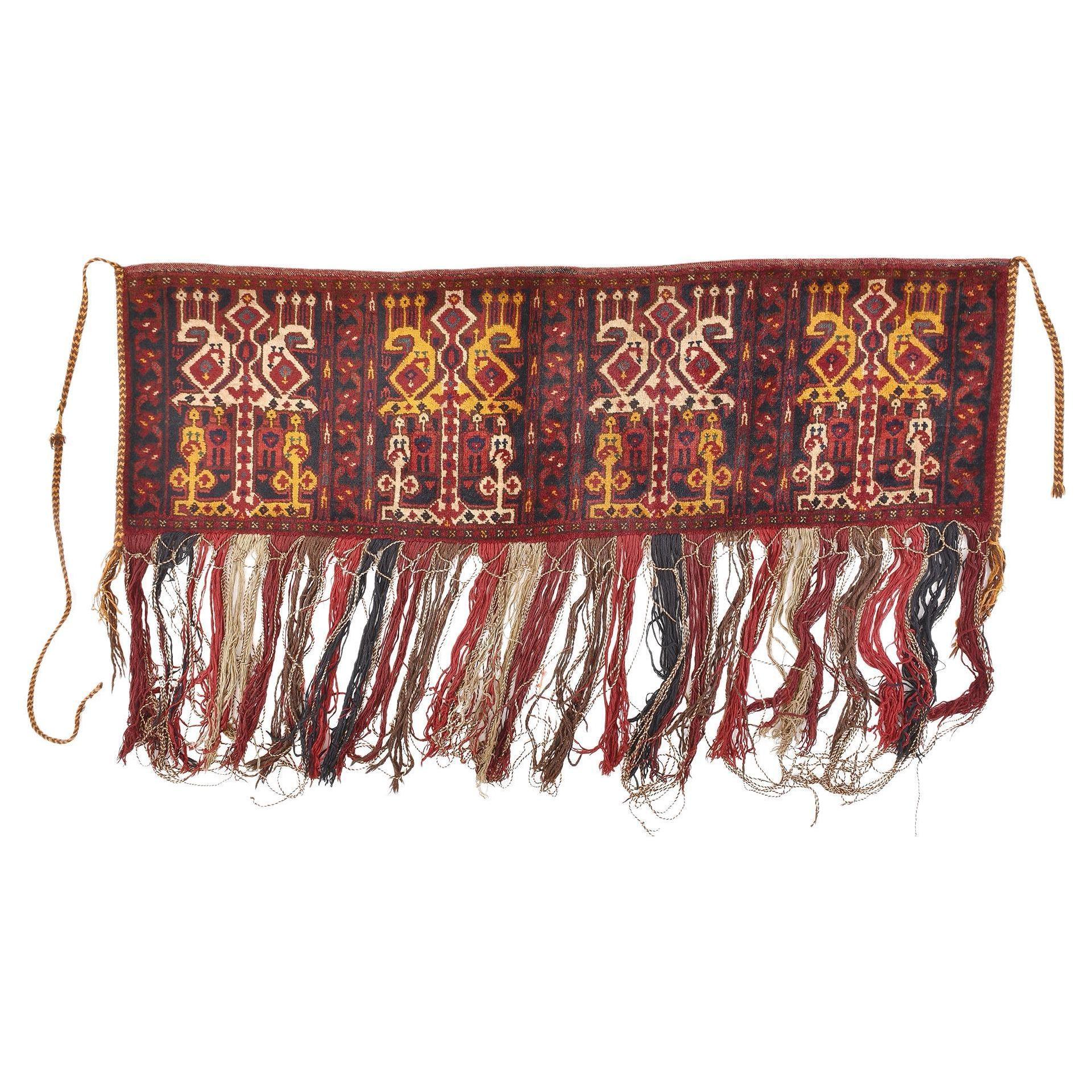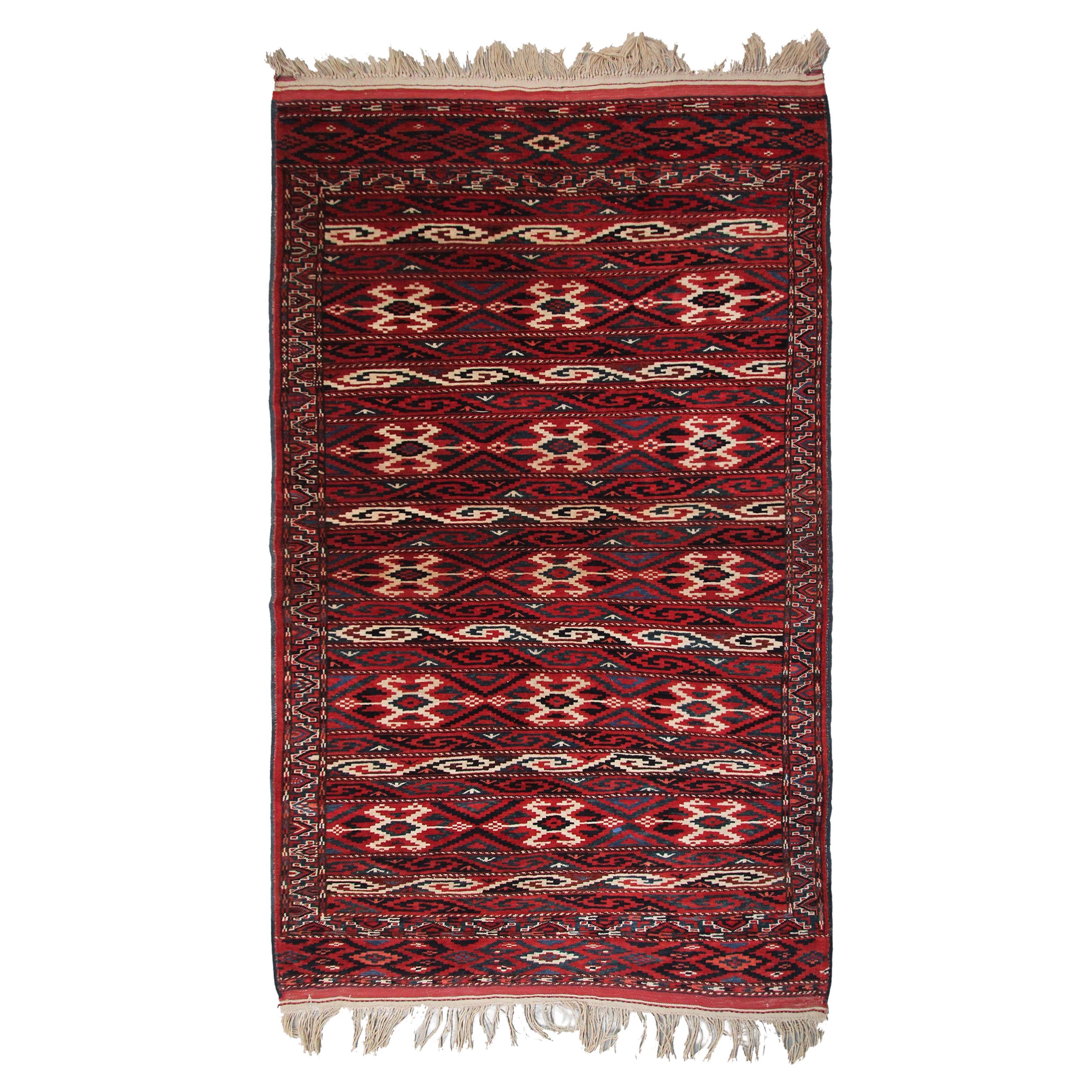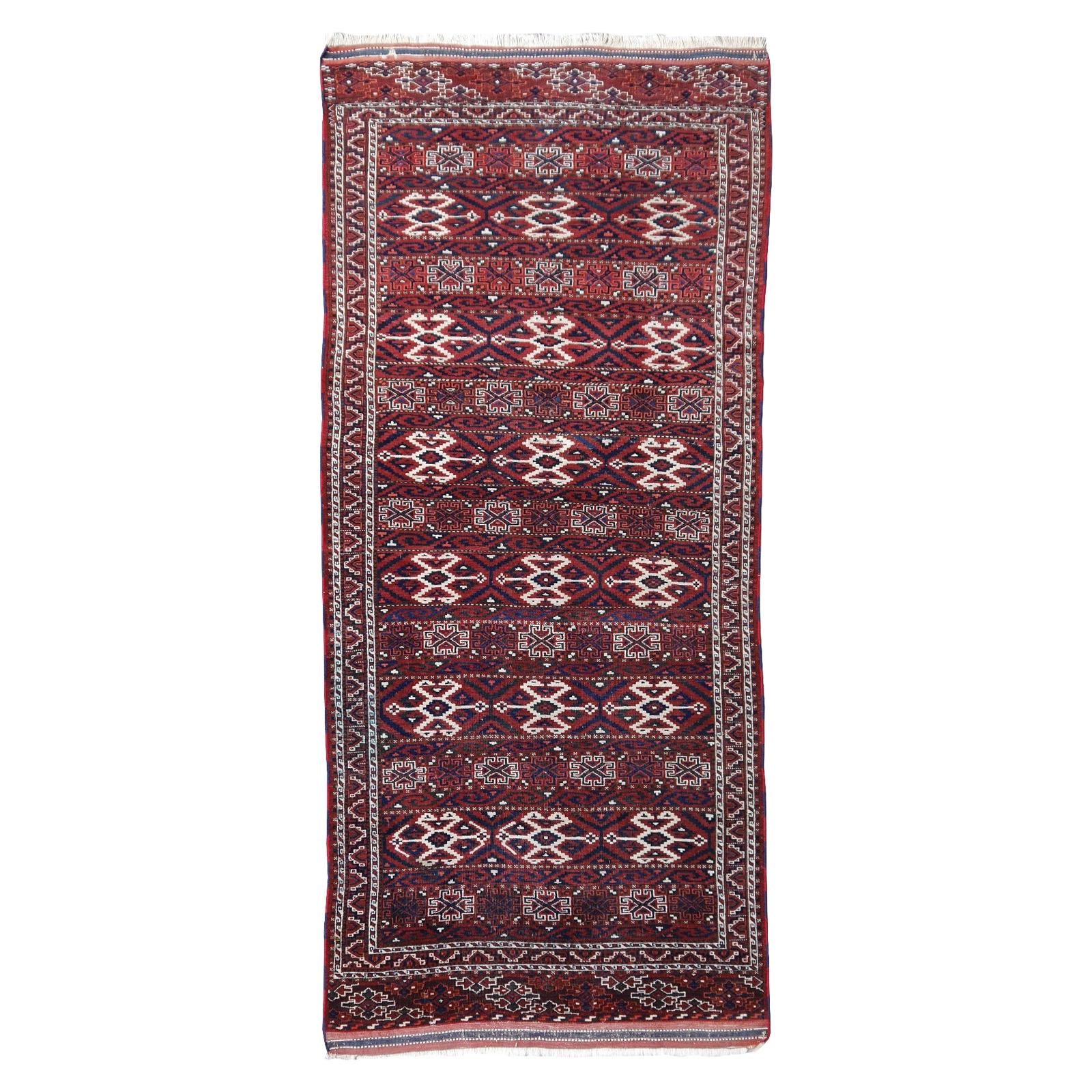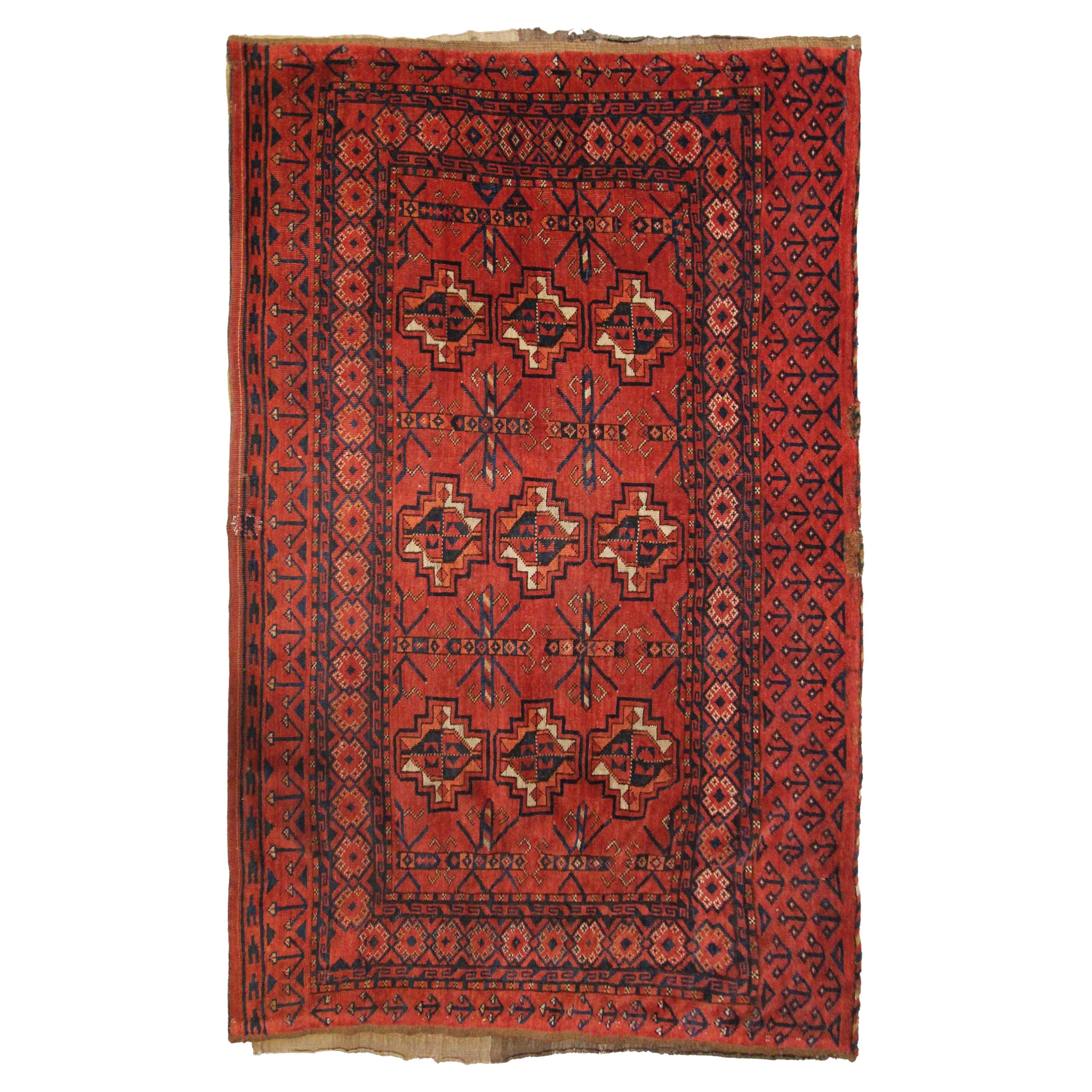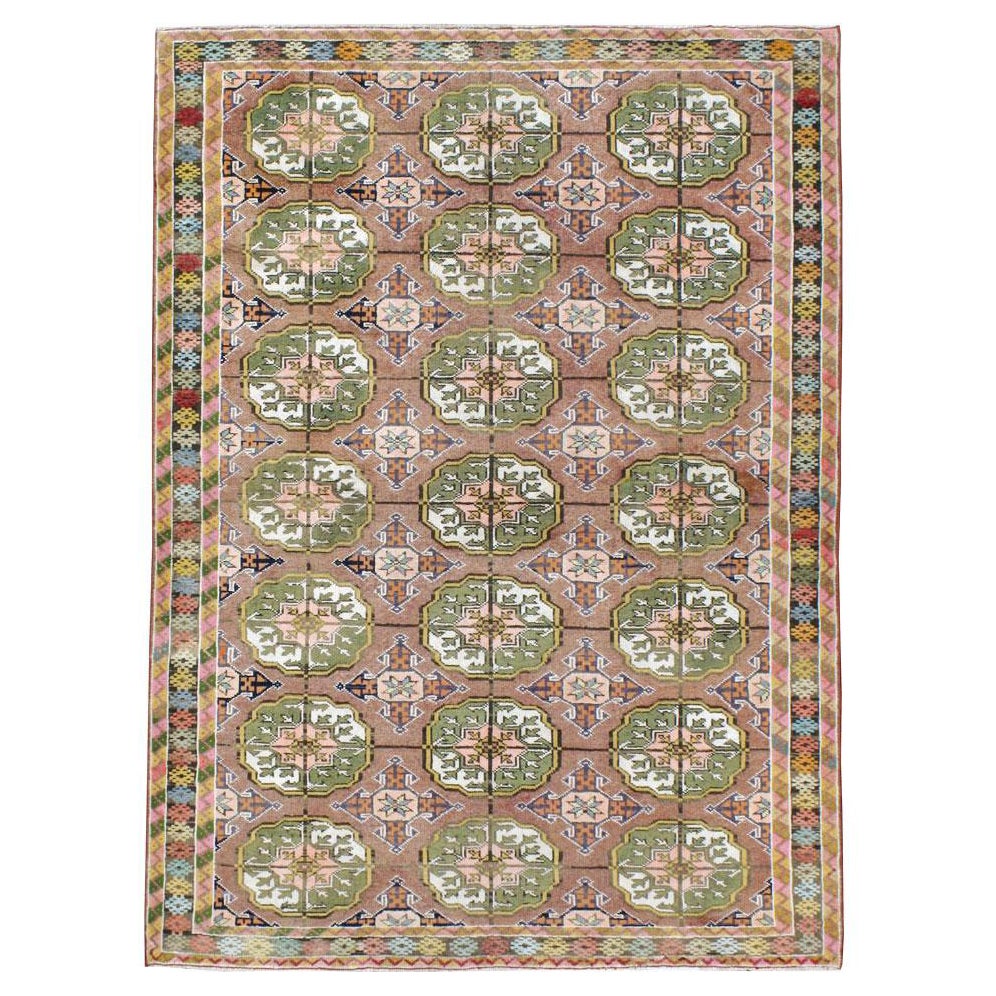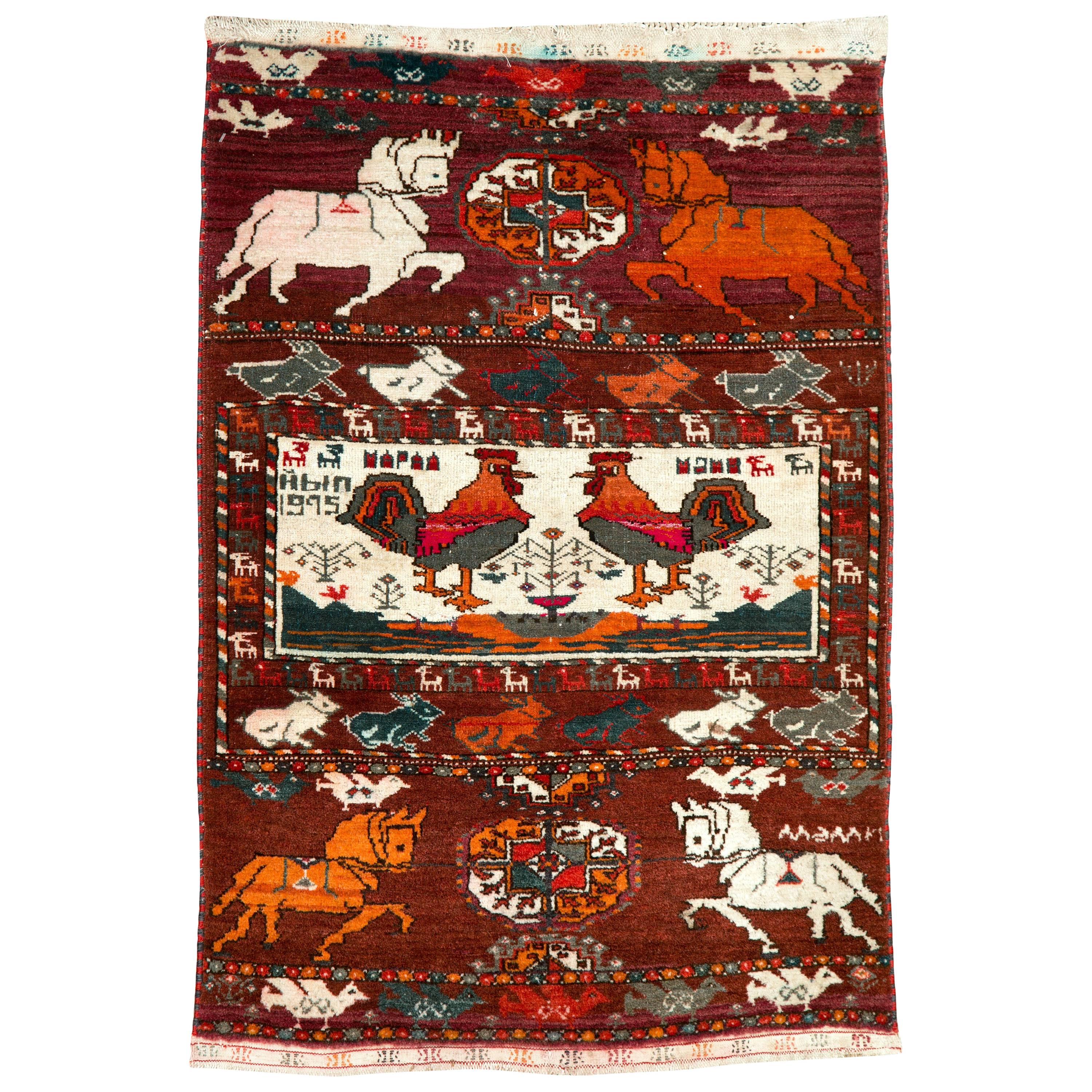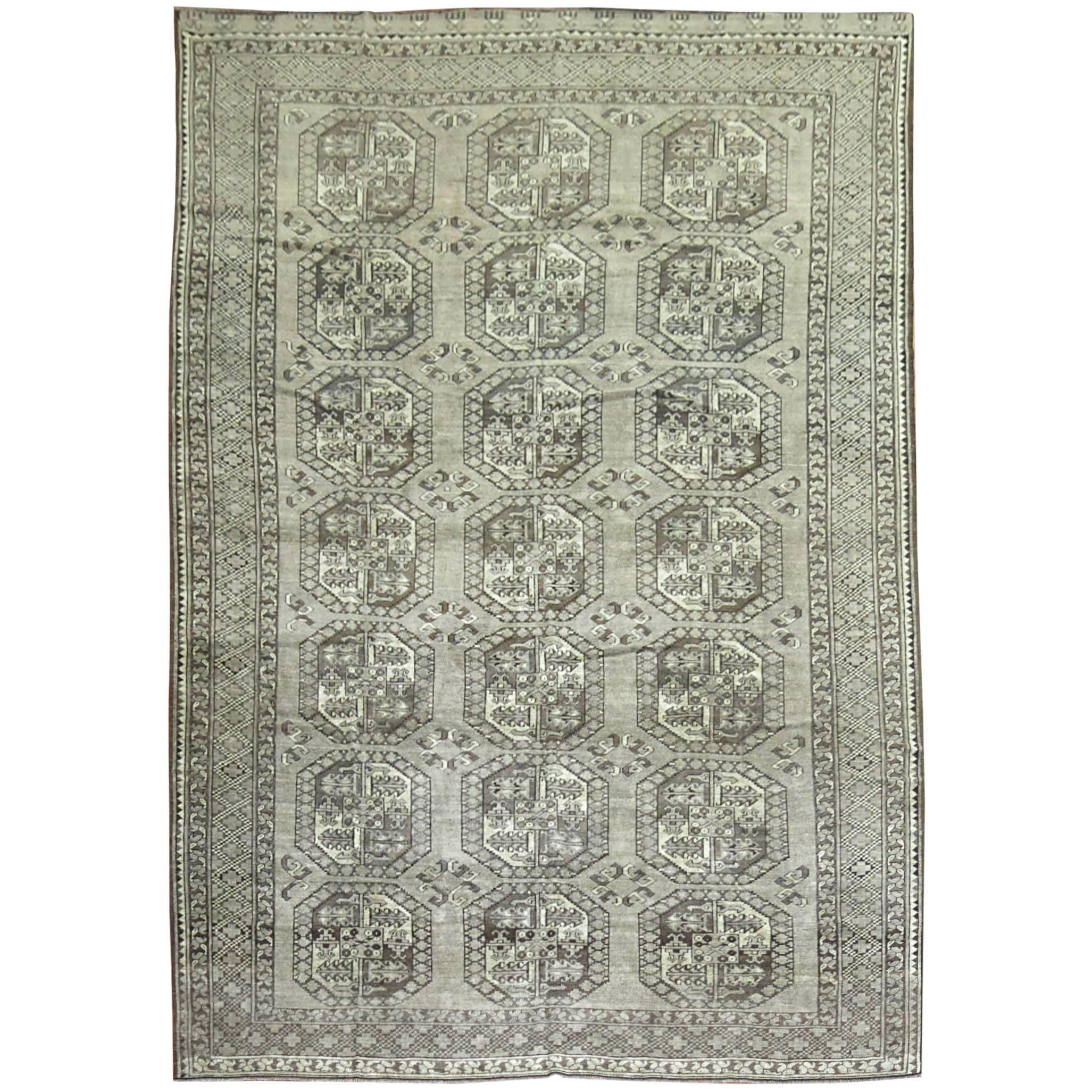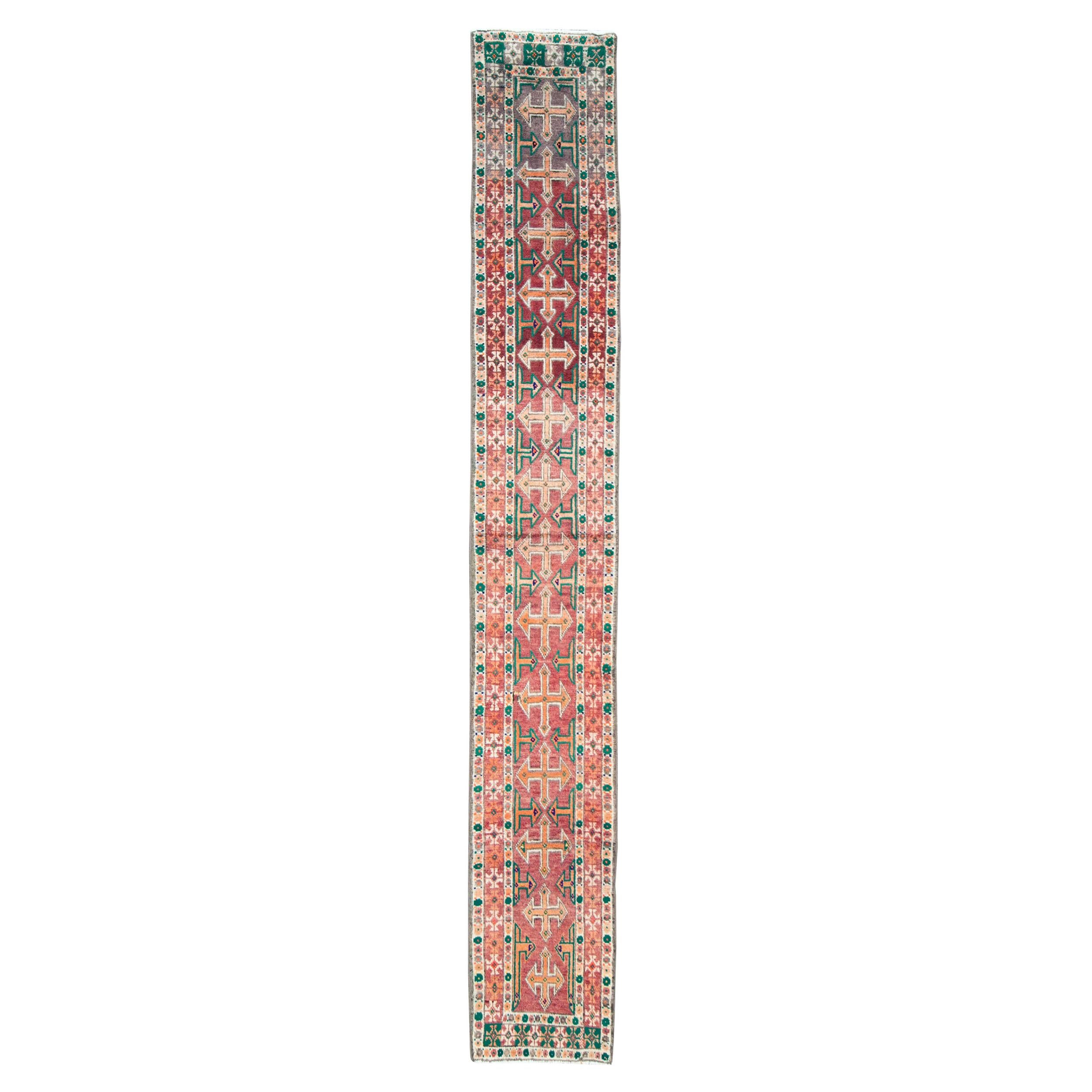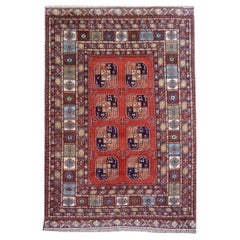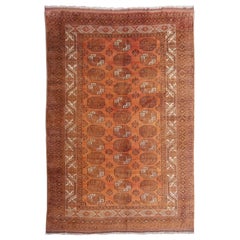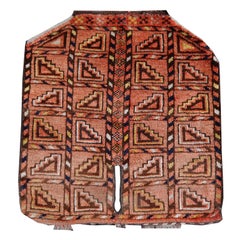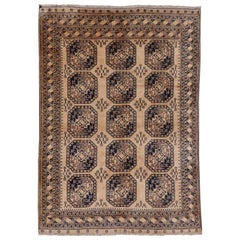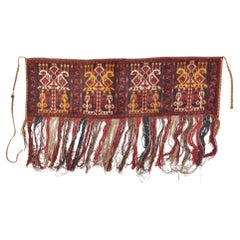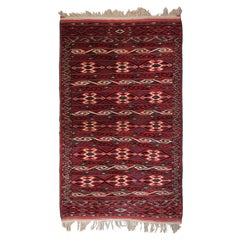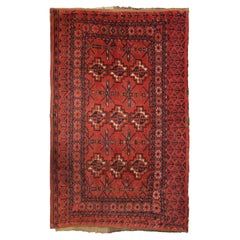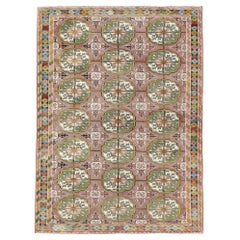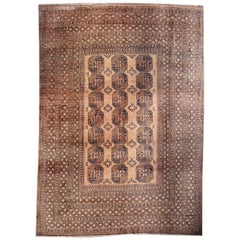
Oversized Ersari Tribal Turkoman Rug
View Similar Items
Want more images or videos?
Request additional images or videos from the seller
1 of 18
Oversized Ersari Tribal Turkoman Rug
About the Item
- Dimensions:Width: 122.05 in (310 cm)Length: 153.55 in (390 cm)
- Materials and Techniques:Wool,Hand-Knotted
- Place of Origin:
- Period:
- Date of Manufacture:1950
- Condition:Wear consistent with age and use. The rug has an Antiquewash / Goldwash.
- Seller Location:Lohr, Bavaria, DE
- Reference Number:1stDibs: LU980513714381
About the Seller
5.0
Gold Seller
Premium sellers maintaining a 4.3+ rating and 24-hour response times
Established in 1967
1stDibs seller since 2013
166 sales on 1stDibs
Typical response time: 1 hour
Authenticity Guarantee
In the unlikely event there’s an issue with an item’s authenticity, contact us within 1 year for a full refund. DetailsMoney-Back Guarantee
If your item is not as described, is damaged in transit, or does not arrive, contact us within 7 days for a full refund. Details24-Hour Cancellation
You have a 24-hour grace period in which to reconsider your purchase, with no questions asked.Vetted Professional Sellers
Our world-class sellers must adhere to strict standards for service and quality, maintaining the integrity of our listings.Price-Match Guarantee
If you find that a seller listed the same item for a lower price elsewhere, we’ll match it.Trusted Global Delivery
Our best-in-class carrier network provides specialized shipping options worldwide, including custom delivery.More From This Seller
View AllErsari Rug Vintage Tribal Turkoman Hand Knotted Carpet
By Turkoman
Located in Lohr, Bavaria, DE
Large sized tribal rug Afghan Ersari Turkoman or Turkmen rug - "one of a kind" decorative tribal Art.
The Turkmen or Turkoman people are settling in villages in Afghanistan an Turk...
Category
Vintage 1970s Afghan Tribal Central Asian Rugs
Materials
Wool
$2,784 Sale Price
20% Off
10 x 13 ft Oversized Rug Ersari Tribal Turkoman Hand Knotted Semi Antique Carpet
By Turkoman
Located in Lohr, Bavaria, DE
Large oversized tribal rug Afghan Ersari Turkoman or Turkmen rug - "one of a kind" decorative tribal Art.
The Turkmen or Turkoman people are settling in villages in Afghanistan an Turkmenistan near the Persian border. Their origin is tribal nomadic, but most members of the tribes have settled in villages in the last decades. Typical for most Turkoman carpets is their geometric design made of wide borders and a repeating inner field with symbols called "Gul" The design of the Gul and the borders tell a lot, which tribe of Turkoman made the rug.
The rug listed has 36 octagonal main Guls (eight edged) in 3 rows divided by smaller minor Guls. The golden / beige copper color is very unusual since most Turkoman rugs are made in a bright tomato red. This one has a wool with silk-like shine, a color best defined as very light copper combined with ivory and brown motives. Since tribal people usually have smaller portable looms, it is normal that they make small rugs. Most Turkmen rugs found are between 4 x 6 ft and 8 x 11 ft. For this reason, this 13 x 10 ft rug...
Category
Mid-20th Century Afghan Tribal Central Asian Rugs
Materials
Wool
$10,709 Sale Price
20% Off
Ersari Rug Saddle Blanket Cover Tribal Turkoman Hand Knotted Antique Carpet
By Turkoman
Located in Lohr, Bavaria, DE
Tribal rug Afghan Ersari Turkoman or Turkmen rug saddle cover- "one of a kind" decorative tribal Art.
The Turkmen or Turkoman people are settling in villages in Afghanistan an Turkm...
Category
Vintage 1930s Afghan Tribal Central Asian Rugs
Materials
Wool
$884 Sale Price
20% Off
Ersari Rug Large Size Tribal Turkoman Hand Knotted Semi Antique Carpet
By Turkoman
Located in Lohr, Bavaria, DE
Large sized tribal rug Afghan Ersari Turkoman or Turkmen rug - "one of a kind" decorative tribal Art.
The Turkmen or Turkoman people are settling in villages in Afghanistan an Turk...
Category
Mid-20th Century Afghan Tribal Central Asian Rugs
Materials
Wool
$5,121 Sale Price
20% Off
Djoharian Collection Yomud Tribal Turkmen Turkoman Antique Rug with Ram Motif
By Turkoman
Located in Lohr, Bavaria, DE
Yomud Turkoman or Turkmen rug, "one of a kind" decorative tribal Art.
The Turkmen or Turkoman people are settling in villages in Afghanistan an Turkmenistan near the Persian border...
Category
Mid-20th Century Turkestan Tribal Central Asian Rugs
Materials
Wool
$3,436 Sale Price
20% Off
Ersari rug 11.2 x 16.4 ft Palace size tribal Turkmen hand knotted antique carpet
By Turkoman
Located in Lohr, Bavaria, DE
Large oversized tribal rug Afghan Ersari Turkoman or Turkmen rug - "one of a kind" decorative tribal Art.
The Turkmen or Turkoman people are settling in villages in Afghanistan an ...
Category
Mid-20th Century Afghan Tribal Central Asian Rugs
Materials
Wool
$11,174 Sale Price
20% Off
You May Also Like
Turkoman Ersari
Located in Alessandria, Piemonte
nr. 1047 - Geometric unusual pattern for this beautiful wall hanging little rug, made as bag by Turkoman Ersari nomads.
Torbas were used by nomads for storage like bags, but also ove...
Category
Mid-20th Century Turkmen Other Central Asian Rugs
Materials
Wool
$2,558
Antique Turkoman Ersari Main Rug Afghan Geometric Rug Tribal Rug
Located in New York, NY
Antique Turkoman Rug Geometric Tribal Rug
4x8
Measures: 4.3" x 7.5" 130cm x 226cm.
"This is a beautiful antique Turkoman rug with a beautiful geometric pattern. A cool, trib...
Category
Vintage 1940s Afghan Caucasian Rugs
Materials
Wool
$2,389 Sale Price
20% Off
Antique Turkoman Ersari Main Rug Afghan Geometric Rug Tribal Rug, 1880
Located in New York, NY
Antique Ersari Turkoman rug Antique Tribal rug geometric wool foundation
3x5 3'2" x 5'2" 135cm x 158cm 1910
"This is a beautiful antique Turkoman rug with a beautiful geometric ...
Category
Antique Early 1900s Afghan Caucasian Rugs
Materials
Wool
$3,160 Sale Price
20% Off
Tribal Turkoman Inspired Mid-20th Century Handmade Persian Malayer Accent Rug
Located in New York, NY
A vintage Persian Malayer accent rug handmade during the Mid-20th Century inspired by Central Asian tribal Turkoman carpets.
Measures: 4' 7" x 6' 4".
Category
Mid-20th Century Persian Tribal Persian Rugs
Materials
Wool
Vintage Persian Turkoman Pictorial Rug
Located in New York, NY
A vintage Persian Turkoman (Turkmen) carpet from the third quarter of the 20th century with a pictorial design.
Category
Vintage 1970s Persian Tribal Persian Rugs
Materials
Wool
Tribal Mid-20th Century Handmade Persian Turkoman Runner
Located in New York, NY
A vintage Persian tribal Turkoman rug in runner format handmade during the mid-20th century. Although this rug is of Persian origin, the roots of Turkoman rugs originated in the Central Asian region.
Measures: 1' 6" x 10' 4"
Central Asian Rugs & Carpets:
Central Asia is a vast area stretching from Northeastern Persia to western China, and from northern Afghanistan to the southern edge of Russia. The carpets can be usefully divided into three groups: the nomadic Turkmen rugs of Turkmenistan, northern Afghanistan, and northeastern Persia; the non-Turkmen tribal pieces from Kazakhstan, Uzbekistan, and Kirghizstan; and the urban creations of Khotan, Yarkand, and Kashgar, oasis cities of Western China (Xinjiang Province).
Commercially, the most important group is from Khotan, the easternmost of the Chinese Turkestan cities. The craft of rug weaving is primarily in the hands of Muslim Uighurs. Khotan carpets mix purely Central Asian design themes with Chinese elements. Native Khotan devices include pomegranate trees, upright flowers, round medallions, and yellow or red grounds. Chinese motives include triangular fretwork corners, swastika fretwork, and Yun-Tsao Tou (clouds and rain) diagonally striped polychrome borders. Cotton foundations, asymmetrical (Persian) knots, and medium weaves are standard. Some vintage Khotan are in horizontal, pictorial layouts with multiple various vases and plants. Saphs (multiple prayer niche panel carpets) are also a Khotan specialty. Others employ stepped and layered lozenge medallions, singly or in pairs. Still others, almost all antique, feature a stylized version of the allover Persian Herati design. Many of the oldest pieces employ brown wool wefts. Antique and vintage Khotans are almost always in the k’ang (double square) layout, conforming to the local household plans. Only relatively recently has the 6’ by 12’ or 7’ by 16’ format been replaced by the 9’ by 12’ size. As a result, an antique room size Khotan carpet is very uncommon. Reds are cinnamon, tomato and rust, never wine reds, crimson, or scarlet. Yarkand, farther west on the old Silk Road specializes in multi-medallion long carpets while Kashgar, farthest west and most under Persian influence, has traditionally knotted allover pattern pieces with finer weaves, often with silk piles, and enriched with medal thread, on cotton foundations. Extant Kashgars go back to the 17th century, but the carpet craft in Chinese Turkestan must be much older as fragments have been recovered from local tombs of the early C.E. period. Kashgars are the rarest of all East Turkestan rugs. Most available vintage East Turkestan carpets are interwar Khotans, many with pleasingly soft decorative palettes.
The non-Turkmen nomads include the Kazakh, Kirghiz, Uzbek, and Karakalpak groups. Like the Turkmen, they were once all seasonally migratory, dwelling in round felt tents (yurts), but have been settled, at least partially, in the villages, and have taken up crafts and agriculture instead of sheep herding. As a result, carpet production has transitioned from domestic tent use to commercial sale, but the roots of long traditions are still evident. The Uzbeks weave...
Category
Mid-20th Century Persian Tribal Persian Rugs
Materials
Wool
Recently Viewed
View AllMore Ways To Browse
4 X 6 Hand Knotted Pure Silk Rug
Jan Kath Erased
Jan Kath Rug
Jerm Rugs
Makoto Kagoshima
Martin Brudnizki
Safavieh Rugs
Antique Pedestal Cake Stands
Antique Pewter Charger
Antique Philadelphia Chippendale Chair
Antique Quadruple Plate
Antique Rembrandt Lamp
Antique Sawmill
Antique Serapi Rug 5x7
Antique Silver 3 Tier Stand
Antique Silver Communion Set
Antique Silver Plate Mustard Pots Mustard Pots
Antique Silver Wallet
